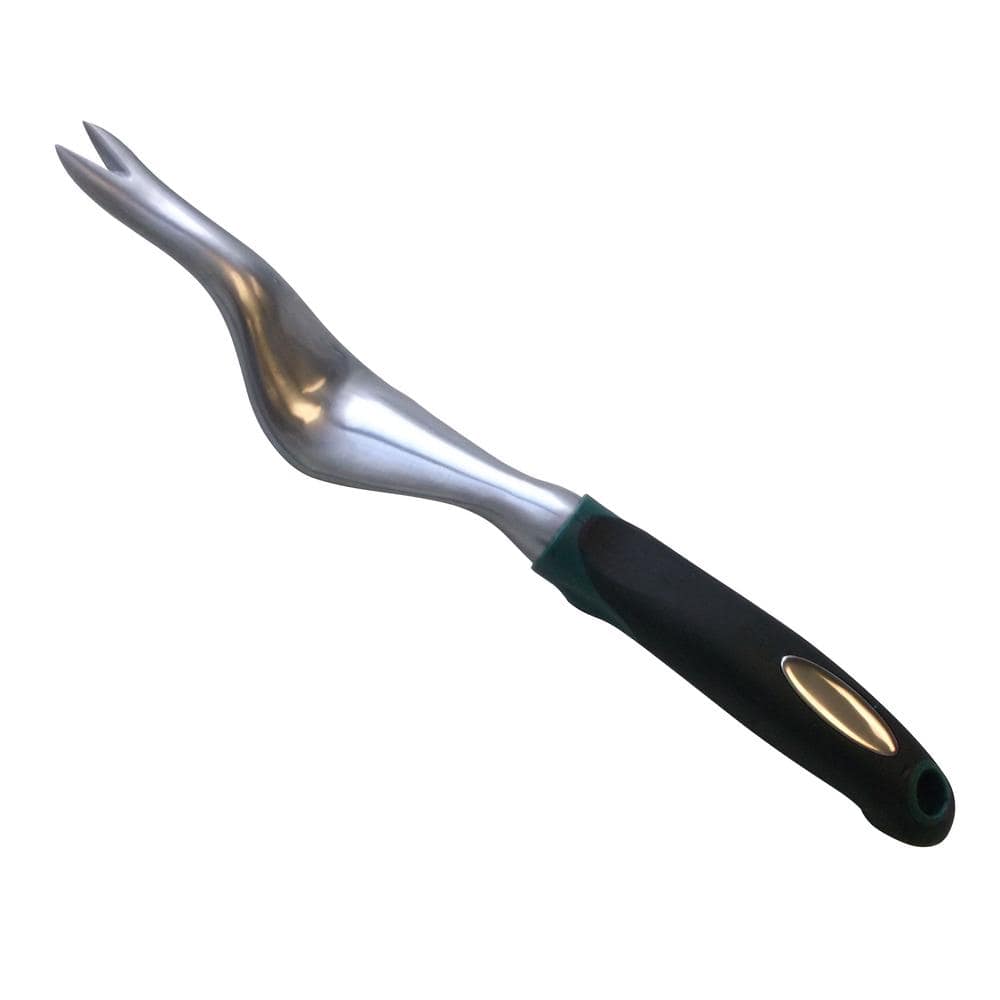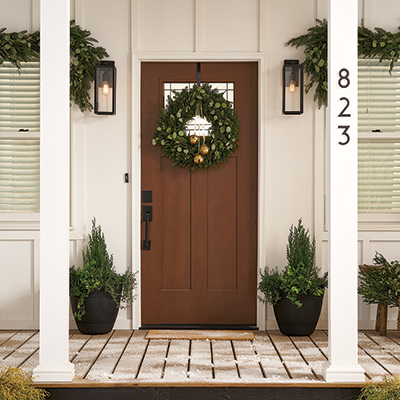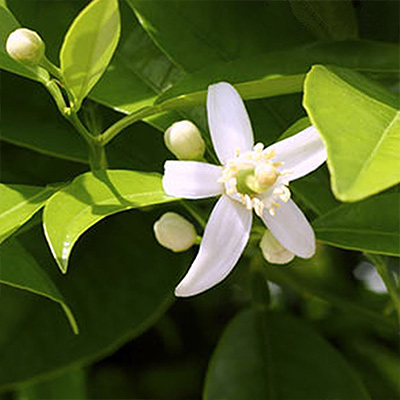Holiday Houseplant Care

Published March 21, 2025
Houseplants, just like evergreens, citrus and blooming bulbs, make wonderful gifts during the holidays. When carols fade and decorations are stored away, keeping these plants alive will test your green thumb.
The best advice is to treat most holiday plants like you would treat houseplants until spring, then transition them into your garden when weather warms.
In this guide, learn how to care for popular Christmas houseplants and how to help them thrive after the holiday season.
Table of Contents
Poinsettia
Amaryllis
Christmas Cactus
Citrus Tree
Cyclamen
Norfolk Island Pine
Poinsettia

Poinsettias are native to Mexico, and if you garden in a similar frost-free area, you can grow these bright blooms outdoors. In colder climates, good poinsettia care means keeping them inside through the winter.
When caring for poinsettias, you can keep them indoors through winter and plant them outside about two weeks after your average last date of frost in spring.
Poinsettias are easy to care for once you know their needs.
Keep these tips in mind for indoor poinsettia care:
- Put poinsettias in a sunny spot in your home, preferably near a window. Bright, indirect light is best.
- Keep them away from drafts like air vents and exterior doorways.
- Water once a week or when soil is dry to the touch. Avoid overwatering; excess water will cause root rot.
- The easiest watering method uses ice cubes and knowing the size of your plant’s pot. A 6-inch pot will need six ice cubes every three to five days. An 8-inch pot requires eight ice cubes, and so on. Let potting soil completely dry before watering again. You'll likely water your poinsettias about once a week.
Amaryllis

What could be easier than opening a box with a ready-to-plant bulb, adding water and waiting for flowers to appear? That's just part of the appeal of forcing amaryllis blooms at Christmas.
You can buy an amaryllis bulb that’s boxed and ready to bloom, or pot your own with a purchased bulb. Place amaryllis near a sunny window and keep them evenly moist once growth starts. Amaryllis flowers will last longer if plants are kept in a cool room.
Waxed amaryllis bulbs are popular holiday gifts. These large, wax-dipped bulbs require no planting or watering. Just place the bulb in a sunny indoor space away from drafts. The bulbs usually will send up stems with 4 to 5 flowers each and bloom repeatedly.
When planted outdoors, amaryllis bulbs are hardy in growing zones 8 to 11. In these areas, let the plant go dormant in fall, cover with mulch and wait for blooms to emerge in spring.
Alternatively, you can keep your amaryllis indoors. Here's how to store a dormant amaryllis bulb:
- After flowers fade, cut amaryllis stem an inch from the base of the bulb.
- Water as needed and apply houseplant fertilizer monthly until midsummer.
- At the end of summer, stop watering and let the bulbs rest for a couple of months before forcing again.
Christmas Cactus

Colorful Christmas cactus plants are succulents. They don't require much water year-round. When they're in bloom, keep the soil moist, but not soggy. If the stems start to look flabby, you’re probably over-watering. Let the soil thoroughly dry out before watering again.
Christmas cacti like warm temperatures, bright light (but not direct sun), and well-drained soil. When blooms are finished, keep the plant in a cool room, around 50 degrees Fahrenheit, and reduce watering to a minimum. When new buds appear, resume watering and fertilizing, and move the plant back into a warm spot. If buds drop, your cactus may have been exposed to a draft or sudden temperature change, or you may have let it get too dry. Protect plant from drafts and keep watered.
Citrus Tree

The promise of homegrown citrus like Meyer lemons, kumquats and oranges makes dwarf citrus trees a popular gift for gardeners. These trees can be successfully grown as houseplants with the right amounts of sunlight and humidity.
Keep humidity high with a humidifier, a pebble tray or regular misting with a spray bottle of water.
Citrus trees thrive in temps between 55 and 85 degrees Fahrenheit. Citrus trees tolerate brief exposure to extreme highs and lows, as long as there is adequate water and they are otherwise healthy plants.
Cyclamen

Cyclamen is a winter-blooming plant with flowers that are pink, red or white. Many have attractive leaves with silver marbling.
Water cyclamen when soil feels dry to the touch but avoid splashing the crown. Cyclamen needs bright, indirect light and cool temperatures. Avoid putting cyclamen plants near drafts from air vents and exterior doors.
Provide high humidity for cyclamen by keeping them on a tray filled with pebbles and a little water. Be sure to keep plant roots away from too much water. After cyclamen flowers fade, the plant will go dormant. Stop watering and resume when new leaves appear in fall. Apply a low-nitrogen fertilizer every other week while your cyclamen is actively growing. Look to the N-P-K ratio on the fertilizer package to determine a low-nitrogen product. The N number will be lower than P (phosphorus) and K (potassium).
Norfolk Island Pine

Despite its hardy looks, Norfolk Island pine is a tropical plant native to the South Pacific. In North America, they're usually grown as small-space container trees. Grown in their native habitat or tropical climates, they reach heights up to 80 feet tall.
Be sure the container for your Norfolk Island pine has proper drainage. It’s also a good idea to place it in a saucer filled with rocks so that the roots stay dry. Let soil dry between waterings.
Norfolk Island pines prefer cool room temperatures of about 65 degrees Fahrenheit during the day and no lower than 50 degrees Fahrenheit at night. They don’t like drafts. Place your Norfolk Island pine tree near a large sunny window.
In spring, when nighttime temps are consistently above 50 degrees Fahrenheit, move the Norfolk Island pine outside to a shaded patio. As it acclimates to outside temps, you can move it into full sun, but try to protect it from intense late afternoon sun.
Norfolk Island Pines are hardy in zones 10 and 11, and you can plant them outside in these areas.
Paperwhite Narcissus

Paperwhite narcisuss is a non-hardy, fragrant daffodil that fills your home with fresh blooms and fragrance during the holidays. Pot paperwhite bulbs as soon as you receive them, or store them in a cool, dry place until you are ready to plant. They are best rooted at temperatures below 60 degrees Fahrenheit. Once rooted, a somewhat warmer house temperature is preferred. But not too hot or too dry an environment, as that may hinder flowering. Also, the less light they receive, the taller they will grow.
To force paperwhite narcissus bulb blooms in time for Christmas, plant on or about November 1. The bulbs will send up stalks and flower in 4 to 6 weeks, just in time for your holiday decorating.
Paperwhite narcissus plants are good for a single season in colder zones, and you can compost spent blooms without guilt. They are winter hardy and will bloom annually in zones 8 to 11.
Rosemary Plants

Piney rosemary shrubs shaped into Christmas trees are a go-to gift for cooks and gardeners. Out of all the holiday houseplants, rosemary is the best bet for years of enjoyment if you live in a warm zone.
Evergreens like rosemary can present challenges as long-term houseplants. Luckily, rosemary is hardy and will survive outside in zones 7 to 11. If your winters are mild, choose a sunny location, preferably by a driveway or walkway to enjoy its fragrant boughs. Or pot it in a roomy container filled with a quality, well-draining potting mix and enjoy it outside in summer and indoors in winter.
Outdoors, protect rosemary from winds. Rosemary is native to the Mediterranean and thrives in full sun.
Try keeping rosemary as a houseplant in winter. To prevent root rot, fill the plant saucer with rocks. Touch the soil every day or so and only water when the soil is dry. After the last frost in the spring, repot rosemary and place it outside to soak up the sun during the warm months. Use sharp pruners to harvest rosemary stems. The leaves and stems can be used in the kitchen and in bouquets.
When you learn how to care for holiday houseplants, you can extend these beautiful winter blooms and foliage into the following spring and summer. Whether you need the right plants, pots or potting soil, download The Home Depot Mobile App and select and buy the supplies you want. We’ll deliver online orders when and where you need them.
































